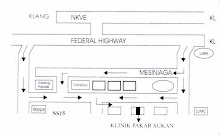Achilles Tendonitis
Achilles tendonitis is the inflammation of the Achilles tendon and is characterize by slow and gradual onset of pain in the Achilles region. The pain will worsen with active sports and physical activities such as golf. Golfers who play the walking course are more prone to develop the Achilles injury. Achilles tendonitis is more common in older golfers whose tendon has become stiffer and less flexible with aging.
- Swelling.
- Stiffness, especially in the morning.
- Pain will tend to be worse in the morning.
- Pain after golf.
- Pain worse with increased sports activities.
- Pain may decrease with rest and icing.
- Tight calf.
- Thickening of the Achilles tendon.
- Redness or warmth over the skin.
- Feel of creaking sound or sensation on the tendon when the foot is move.
The Achilles bursa is a fluid filled sack that helps the Achilles tendon move smoothly on the calcaneum bone underneath during movement. It can become inflamed with repetitive movement as in long walking, brisk walk or running. Achilles bursitis also commonly occurs with Achilles tendonitis. The symptoms are quite similar. To find which condition is actually causing pain is difficult for a golfer. Your doctor can tell you from your symptoms and examination.
It is a painful overuse tendon conditions which have a non-inflammatory pathology. The cause is an underlying degeneration of the Achilles tendon collagen fibers in response to repetitive overuse. Light microscopy of patients operated on for this type of Achilles tendon pain revealed collagen fibers disruption and classical inflammatory cells are usually absent. The symptoms are similar to tendonitis. Anti-inflammatory medication only provided short term pain relief.
Achilles tendon tear or rupture is less common. Immediate medical attention is usually required in the case of completed tendon ruptured. Minor small partial tear may have similar symptoms to Achilles tendonitis or tendinosis. In sports medicine, Achilles tendonitis has been described as microscopic tears with inflammation. Ultrasound scan or MRI scan can identify the big tear accurately.
- Sudden onset of pain in the Achilles region.
- A snap or pop sound.
- Sudden weakness in calf muscle.
- Leg suddenly giveway.
- Swelling.
- Bruising will be apparent after one to two days later.
- Limping and difficulty walking.
Risk factor for Achilles injury:
- Repeated overuse
- Bad or worn out shoes
- Over weight
- Aging
- Incorrect shoes over long period of time (over six months)
- Flat foot.
- Tight or weak calf muscles.
- Ankle joint stiffness.
- Ankle instability or not balance after lower leg injury.
- No routine warm up and stretching exercise for the leg before and after golf.
- Temporary rest
- Use buggy instead of walking
- Reduce other sports or physical activities.
- Ice regularly
- Ice massage
- Stretching exercise for calf, hamstring and ankle
- Calf strengthening exercise
- Check your golf shoes
- Orthosis for flat foot




Great article ...Thanks for your great information, the contents are quiet interesting. I will be waiting for your next post.
ReplyDeleteBack Pain Doctor Los Angeles